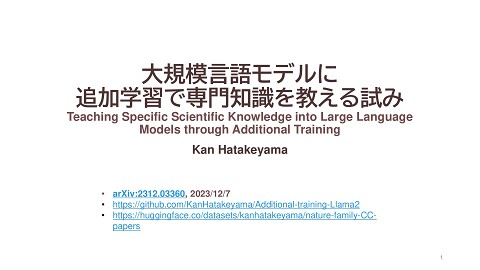A Proximal Variable Smoothing for Nonsmooth Minimization of the Sum of Three Functions Including Weakly Convex Composite Function
1.9K Views
July 05, 25
スライド概要
EUROPT 2025のセッション「Smoothing techniques for nonsmooth optimization」内での招待講演の発表資料
関連論文
1. K. Kume and I. Yamada, "A Proximal Variable Smoothing for Nonsmooth Minimization Involving Weakly Convex Composite with MIMO Application," 2025 IEEE International Conference on Acoustics, Speech and Signal Processing (ICASSP), 2025.
2. K. Kume and I. Yamada, "A Proximal Variable Smoothing for Minimization of Nonlinearly Composite Nonsmooth Function -- Maxmin Dispersion and MIMO Applications," arXiv:2506.05974.
関連スライド
各ページのテキスト
A Proximal Variable Smoothing for Nonsmooth Minimization of the Sum of Three Functions Including Weakly Convex Composite Function Keita Kume and Isao Yamada, Dept. of Information and Communications Engineering, Institute of Science Tokyo 2025/6/30,EUROPT 2025@Southampton 0
Target problem in this study
Find &⋆ ∈ argmin , + ℎ + / ∘ 1 & =: , + 4 (&)(♢),
"∈$
:
(! and ": Euclidean spaces)
% ≔ ℝ ∪ {+∞}: proper lower semicontinuous convex function
1. !: # → ℝ
2.
ℎ: # → ℝ: differentiable and ∇ℎ is Lipschitz continuous over dom' ≔ ( ∈ ! ' ( < ∞
3.
.: / → ℝ: Lipschitz continuous (possibly nonsmooth) and 0 > 0 -weakly convex
(, includes, e.g., ℓ! -norm and minimax concave penalty [Z’10])
$
!"#
4.
3: # → /: continuously differentiable (possibly nonlinear) mapping
5.
argmin ! + : ; ≠ ∅
$ + % || ⋅ ||% is convex
!∈#
Typical applications of the target problem
• Sparse signal estimation (e.g., regularized least squares estimation, sparse spectral clustering)
• Robust signal estimation (e.g., robust phase retrieval)
[Z’10] C.-H. Zhang, “Nearly unbiased variable selection under minimax concave penalty,” Ann. Stat., 2010.
1/20
Find &⋆ ∈ argmin , + ℎ + / ∘ 1 & =: , + 4 (&)(♢),
(! and ": Euclidean spaces)
1.
"∈$
!: # → ℝ ∪ {+∞}: proper lower semicontinuous convex function
2.
ℎ: # → ℝ: differentiable and ∇ℎ is Lipschitz continuous over dom' ≔ ( ∈ ! ' ( < ∞
3.
.: / → ℝ: Lipschitz continuous (possibly nonsmooth) and 0-weakly convex
4.
3: # → /: continuously differentiable (possibly nonlinear)
$
!"#
$ + % || ⋅ ||% is convex
Issues on the existing methods
1.
Proximal linear method, e.g., [DP’19], requires an iterative solver for a subproblem at every iteration:
!&'( ≔ argmin 6 ! + ℎ !& + ∇ℎ !& , ! − !& + $ ; !& + D; !& ! − !&
)∈+
2.
1
+
! − !& %
2?&
Subgradient method, e.g., [ZZZ’23], requires diminishing stepsizes /" , which may cause slow convergence
!&'( ≔ prox,!- !& − ?& A& , A& ∈ B. ℎ + $ ∘ ; !&
Contribution of this study
We propose an inner-loop-free algorithm, without requiring diminishing stepsizes,
for ♢ with guaranteed convergence in terms of a stationary point
[ZZZ’23] D. Zhu, L. Zhao, and S. Zhang, “A unified analysis for the subgradient methods minimizing composite nonconvex, nonsmooth and non-Lipschitz functions,” arXiv (2308.16362), 2023.
[DP’19] D. Drusvyatskiy and C. Paquette, “Efficiency of minimizing compositions of convex functions and smooth maps,” Math. Program., 2019.
2/20
Preliminary: subdifferential / stationary point
Definition
% ≔ ℝ ∪ +∞ ,
For a proper function ?: # → ℝ
• the Fréchet (regular) subdifferential [RW’10, Def. 8.3] is defined by
% − A, ; − ;
%
? ; −? ;
(6
( ∈ dom 4) >D ? ;
% ≔ A ∈ # sup
inf
%||
||; − ;
! HE
EFG GH !IJ
Note: if 4 is convex,:) 4(6
() coincides with the convex subdifferential
6 ≔ 7 ∈ ! ∀( ∈ ! 4 ( − 4 (
6 + 7, ( − (
6 ≥0 .
:4 (
≥0 .
6 − 7, ( − (
6
4 ( −4 (
lim inf
% ∋&→%
#∖ &
&
6||
||( − (
• a point ;⋆ ∈ # is said to be a stationary point of ? if >D ? ;⋆ ∋ N.
Fermat rule [RW’10, Theorem 10.1]
;⋆ ∈ # is a local minimizer of ! + :
⇒ ;⋆ ∈ # is a stationary point of ! + :
Realistic goal for minimization of our target nonconvex function ! + : = ! + ℎ + . ∘ 3
Find a stationary point ;⋆ of ! + :, i.e., N ∈ >D ! + : ;⋆ = >! ;⋆ + >D : ;⋆ .
[RW’10] R. Rockafellar and R. J.-B. Wets, Variational Analysis, Springer Verlag, 3rd edition, 2010.
3/20
Gradient mapping-type stationarity measure [LXʼ24]
!>0
C,D
*↦
ℳB : ' → ℝ: +
6 ↦ argmin ' ( +
prox*+ : ! → !: (
&∈#
min
6FGHIJ"# (
6FB7
(
6
7∈E! C (
!
-*
, 1 =ℎ+5∘7
B
6 - is the proximity operator of ' with index / > 0.
(−(
D,M
reproduces commonly-used stationarity measures: gradient mapping [B’17] or
forward-backward residual [TSP’18]
D,M
% = dist N, >D : ;
%
• ! ≡ 0 ⇒ ℳL ;
ℳL
• : is continuously differentiable ⇒
Proximal gradient method
ℳLD,M ;
V
=
!
N IOPQR!" !
N IL∇D !
N
!!"# ≔ prox$% !! − (∇* !!
L
= !! − (
Fact [LX’24]
∀/ > 0, ∀6
(∈!
% ∈ # is a stationary point of ! + :
;
⇔
&/ '()*+01 &/ '$∇- &/
$
D,M
ℳL
% =0
;
[LX’24] Y. Liu and F. Xia, “Proximal variable smoothing method for three-composite nonconvex nonsmooth minimization with a linear operator,” Numerical Algorithms, 2024.
[B’17] A. Beck, First-Order Methods in Optimization. SIAM, 2017.
[TSP’18] A. Themelis, L. Stella, and P. Patrinos, “Forward-backward envelope for the sum of two nonconvex functions: Further properties and non- monotone linesearch algorithms,” SIAM J. Optim., 2018.
4/20
./0∘2,4
Surrogate measure of !with Moreau envelope
!>0
C,D
*↦
ℳB : ' → ℝ: +
min
B
6
7∈E! C (
D,M
It is challenging to evaluate ℳL
6FGHIJ"# (
6FB7
(
% directly due to the nonsmoothness of . in :.
;
]^W∘;,M
Key idea: Replace ^ in ℳL
Definition
For an η-weakly convex function ,: " → ℝ
./0
D,M
= ℳL
by its Moreau envelope S .
1
-
, + || ⋅ ||- is convex and any [ ∈ (0, \ 2! ),
1
. X +
X − XV V = . proxSW XV
2W
is called the Moreau envelope of . with index W.
S .: / → ℝ: X
V ↦ min
T∈U
•
, 1 =ℎ+5∘7
2 $ is differentiable with ∇ 2 $ = 3!45678"# and
lim 2 $ TN
2
ℝ$$ ∋2→<
1
V
+
proxSW XV − XV
2W
= $(NT)
• There are many examples of $ that prox2= can be easily computed, e.g., ℓ( -norm, MCP, SCAD (see proximity-operator.net)
]^ $ _∘a,D
*
Proposed surrogate measure: ℳB
+
=
6FGHIJ"# (
6FB∇ ]^ $ _∘a (
6
(
B
(norm of the gradient mapping of ℎ + S . ∘ 3) 5/20
&! ,(
&,(
Asymptotic upper bound of ℳ% with ℳ%
Theorem [KY’25, Theorem III.2 (b)]
b
Ia s. t. W ↘ 0.
% ∈ #, ;_ b
%
Let ;
⊂
#
s.
t.
lim
;
=
;
,
W
⊂
0,
0
_
_ _`a
_
_`a
_→b
For f > 0, :_ ≔ ℎ + S# . ∘ 3 and : ≔ ℎ + . ∘ 3, the following hold:
1.
2.
D,M
C% ,D
C,D
% )
(asymptotic
upper
bound
of
ℳ
;
*
lim inf ℳB
+h ≥ ℳB +
L
h→i
C% ,D
* is a stationary point of ; + 1.
If lim inf ℳB
+h = 0, then +
h→i
Original stationary problem for ' + c
Find ;⋆ such that N ∈ >D ! + : ;⋆
Reformulate
),+
Stationary problem for ' + c by using an asymptotic upper bound of ℳ*
Find
) ,+
with ℳ* !
a convergent sequence ;_ b
_`a ⊂ #; such that lim inf ℳ D# ,M ;
_ =0
L
b
Ia
_→b
W_ _`a ⊂ 0, 0
↘0
[KY’25] K. Kume and I. Yamada, "A Proximal Variable Smoothing for Minimization of Nonlinearly Composite Nonsmooth Function- Maxmin Dispersion and MIMO Applications," arXiv:2506.05974, 2025.
6/20
Proposed method: Proximal variable smoothing
Proximal variable smoothing = Proximal gradient method for time-varying ! + :_
= ∈ ℕ +h^j ≔ proxB%D +h − !h ∇1h +h
⋯ ★ ,
1h ≔ ℎ + k% 5 ∘ 7
(Note: An idea of variable smoothing dates back to [BH’15] for convex optimization)
• Each update ★ is computable, i.e., inner-loop-free, if prox*!+ and prox4!5 are computable
(there are many functions whose proximity operator is computable).
2! [KY’24]
Choice of [" 7
"6! ⊂ 0, 2\
1.
lim W_ = 0
% = ℎ+.∘3 ;
%
for lim :_ (%
;) = : ;
_→b
_→b
2. ∑b
_`a W_ = ∞
3.
∃i ≥ 1, ∀k ∈ ℕ
S#$%
Ia
i ≤
≤1
S#
Example: • W_ ≔ 20 IakIa/e (p ≥ 1)
Ia
Ia
• W_ ≔ 20
k log k + 1
to avoid excessively fast convergence
of W_ to 0
We recommend to use W_ ≔
from a viewpoint of convergence speed
[BH’15] R. I. Boț, and C. Hendrich, “A variable smoothing algorithm for solving convex optimization problems,” TOP, 2015.
[KY’24] K. Kume and I. Yamada, “A variable smoothing for weakly convex composite minimization with nonconvex constraint,” arXiv:2412.04225, 2024.
%
20 IakI&
7/20
Proposed method: Proximal variable smoothing Proximal variable smoothing = Proximal gradient method for time-varying ! + :_ = ∈ ℕ +h^j ≔ proxB%D +h − !h ∇1h +h ⋯ ★ , 1h ≔ ℎ + k% 5 ∘ 7 (Note: An idea of variable smoothing dates back to [BH’15] for convex optimization) • Each update ★ is computable, i.e., inner-loop-free, if prox*!+ and prox4!5 are computable (there are many functions whose proximity operator is computable). Assumption for existence of “good” stepsize f_ 1. ∇:_ is q∇D# −Lipschitz continuous over dom !. 2. (∃ra, rV > 0, ∀k ∈ ℕ) q∇D# ≔ (ra + rVW_Ia) These conditions are achieved if one of the following holds: a. 3 and its Gâteaux derivative D3 are Lipschitz continuous over dom ! [KY’24] b. 3 is a linear operator c. dom ! is compact and 3 is twice continuously differentiable over dom ! [BH’15] R. I. Boț, and C. Hendrich, “A variable smoothing algorithm for solving convex optimization problems,” TOP, 2015. [KY’24] K. Kume and I. Yamada, “A variable smoothing for weakly convex composite minimization with nonconvex constraint,” arXiv:2412.04225, 2024. 8/20
Proposed method: Proximal variable smoothing Proximal variable smoothing = Proximal gradient method for time-varying ! + :_ = ∈ ℕ +h^j ≔ proxB%D +h − !h ∇1h +h 1h ≔ ℎ + k% 5 ∘ 7 ⋯ ★ , (Note: An idea of variable smoothing dates back to [BH’15] for convex optimization) • Each update ★ is computable, i.e., inner-loop-free, if prox*!+ and prox4!5 are computable (there are many functions whose proximity operator is computable). Assumption for existence of “good” stepsize f_ (∃ra, rV > 0, ∀k ∈ ℕ) ∇:_ is q∇D# ≔ (ra + rVW_Ia)−Lipschitz continuous Choice of f_ with t ∈ (0,1) (diminishing) Standard backtracking algorithm [B’17] 1. f_ ≔ 2 1 − t qIa ∇D# = u W_ k → ∞ 2. f_ ≔ max vf fghgi w ∈ ℕ ∪ 0 , f ≔ vf fghgi satisxies the Armijo condition (★★) with fghgi > 0, and v ∈ 0,1 (knowledge on q∇D# is not required, not diminishing) 5 + *! prox$% !! − (∇*! !! ≤ 5 + *! !! − 8( [BH’15] R. I. Boț, and C. Hendrich, “A variable smoothing algorithm for solving convex optimization problems,” TOP, 2015. [B’17] A. Beck, First-Order Methods in Optimization. SIAM, 2017. - ,% ℳ$ / !! / ★★ 9/20
Convergence analysis
Assumption for existence of “good” stepsize f_
(∃ra, rV > 0, ∀k ∈ ℕ) ∇:_ is q∇D# ≔ (ra + rVW_Ia)−Lipschitz continuous
Theorem [KY’25, Theorem III.6]
The sequence ;_ b
_`a ⊂ # generated by (★) with any initial point ;a ∈ dom! satisfies:
1.
D ,M
∃| > 0, ∀k ∈ ℕ min ℳ LJ'
ajfj_
D ,M
2. lim inf ℳLJ #
_→b
k
;f ≤
;_ = 0
3. For a subsequence ;m n
b
D
) *
satisfying
lim
ℳ
J
L
n`a
every cluster point ;⋆ ∈ # of ;m n
b
n→b
n`a
Recall: lim o& = 0, ∑<
&>( o& = ∞,
,M
;m(n) = 0,
is a stationary point of ! + ℎ + . ∘ 3.
! ∈ ℕ %h^j ≔ proxB0 D %h − ,h ∇.h %h
&→<
f̅ ≔ max 2 1 − t qIa
∇D% , fghgi
∑#
'(% S'
∃s ≥ 1, ∀v ∈ ℕ s4( ≤
⋯ ★ ,
.h ≔ ℎ + k0 3 ∘ 5
2!$%
≤1
2!
[KY’25] K. Kume and I. Yamada, "A Proximal Variable Smoothing for Minimization of Nonlinearly Composite Nonsmooth Function- Maxmin Dispersion and MIMO Applications," arXiv:2506.05974, 2025
10/20
Tradeoff regarding convergence speeds
We have tradeoff regarding convergence speeds of stationarity and approximation
while they are desired to converge rapidly to zero.
Convergence speeds as k → ∞
Stationarity
D' ,M
min ℳ LJ
;f
ajfj_
=u
Approximation
1
sup |: ; − :_ ; | = u W_
∑_f`a Wf
!∈yQz M
: ≔ ℎ + . ∘ 3, :_ ≔ ℎ + S# . ∘ 3
Q: How should we choose :) to balance these rates ?
A: :) ≔ 2= *+ >
∵u
a
∑#
'(% S'
"
*
#
is a reasonable choice !
= u W_ = u k
%
I&
is achieved if W_ ≔
%
20 IakI&
11/20
Comparisons with variable smoothing-type algorithms The proposed algorithm (★) serves as a generalization of existing variable smoothing-type algorithms for Find &⋆ ∈ argmin , + ℎ + / ∘ 1 & "∈$ (except for recent our work [YKY’25, EUSIPCO 2025 (to appear)]) (Note: , in [YKY’25] is given by ,! − ,- with Lipschitz continuous weakly convex functions ,! , ,- ) [BW’21] A. Böhm and S. J. Wright, “Variable smoothing for weakly convex composite functions,” J. Optim. Theory Appl.,, 2021. [KY’24] K. Kume and I. Yamada, “A variable smoothing for weakly convex composite minimization with nonconvex constraint,” arXiv:2412.04225, 2024. [YKY’24] K. Yazawa, K. Kume, and I. Yamada, “Variable smoothing algorithm for inner-loop-free DC composite optimizations,” arXiv (2503.13990v1), 2025, (to appear in EUSIPCO 2025). [LPV’25] S. López-Rivera, P. Pérez-Aros, and E. Vilches, “A projected variable smoothing for weakly convex optimization and supremum functions,” arXiv (2502.00525v1), 2025. [LX’24] Y. Liu and F. Xia, “Proximal variable smoothing method for three- composite nonconvex nonsmooth minimization with a linear operator,” Numerical Algorithms, 2024. 12/20
Application: Maxmin dispersion problem
m
For given points { {`a ⊂ ℝ| and a nonempty convex compact set Ä ⊂ ℝ| ,
⋆
Find + ∈ argmax
min
(∈q
rsj,t,…,v
(∈q
rsj,t,…,v
+ − Lr
t
= argmin max − + − Lr
Application:
• facility location [DW’80] (e.g., for drones and base stations)
• spatial management [JMY’90]
• computation of Hausdorff distance [P’17]
max
max w (8 , x , max w (, y:
86!,-,…,:
&∈;
;⋆
t
min
?>(,%,…,B
!⋆ − ~?
%
m
Ä
a
between x and y: ≔ {{8 ∣ } = 1,2, … , Ä}
[DW’80] B. Dasarathy and L. J. White, “A maxmin location problem,” Operations Research, 1980.
[JMY’90] M. Johnson, L. Moore, and D. Ylvisaker, “Minimax and maximin distance designs,” J. Stat. Plan. Inference, 1990.
[P’17] L. Pronzato, “Minimax and maximin space-filling designs: some properties and methods for construction,” Journal de la société franç aise de statistique, 2017.
}
V
13/20
Proposed algorithm can be applied to reformulation For given points { m {`a ⊂ ℝ| and a nonempty convex compact set Ä ⊂ ℝ| , Original maxmin dispersion problem ⋆ Find + ∈ argmin max − + − Lr (∈q Reformulated problem via our target problem ⋆ rsj,t,…,v Reformulation Find + ∈ argmin ; + ℎ + 5 ∘ 7 + . (∈ℝ& 0 ;∈Ä , +∞ ;∉Ä . X ≔ max X a, X V, … , X m , ! ; ≔ Å ; ≔ Ç t ℎ ≡ 0, (prox45 can be easily computed [BC’17, Exm. 24.25]) (♢) − ; − a V V − ; − V 3 ; ≔ ⋮ − ; − m V • If the projection onto Ä, i.e., proxÄ+ , is available as a computable tool, then the proposed algorithm can be designed as an inner-loop-free (single-loop) algorithm. • Since dom! is compact and 3 is twice continuously differentiable, our convergence analysis can be applied to the maxmin dispersion problem. 14/20 [BC’17] H. H. Bauschke and P. L. Combettes, Convex analysis and monotone operator theory in Hilbert spaces, 2nd ed. Springer, 2017.
Existing approaches for maxmin dispersion problem
Find ;⋆ ∈ argmin
!∈
ℒ (, É ≔ − É 8 ( − {8
-
max − ; − {
{`a,V,…,m
V
= argmin max ℒ(;, á)
!∈
Ç∈É)
(see [PSX’21])
, Δ: ≔ É ∈ ℝ: 0 ≤ É 8 } = 1,2, … Ä , ∑:
86! É 8 = 1 (unit simplex)
1. Projected Variable Smoothing (ProjVS) [LPV’25] for
Find ;⋆ ∈ argmin ! + .ã ; ,
!∈ℝ,
! ≔ Å ,
.ã ≔ max ℒ(⋅ , á)
Ç∈É)
• ProjVS is a special instance of the proposed algorithm
although an iterative solver [LPV’25, Prop. 5.3] is required for proxSWÑ .
2. Alternating gradient projection (AGP) [PSX’21] for the saddle problem:
Find ;⋆ , á⋆ ∈ Ä×Δm s.t. ℒ ;⋆ , A ≤ ℒ ;⋆ , á⋆ ≤ ℒ , á⋆
∀ , A ∈ Ä×Δm
%, á
% ∈ Ä×Δm satisfying
• AGP is an algorithm for finding a point ;
a necessary condition for ;⋆ , á⋆ ∈ Ä×Δm to be a saddle point.
• To update (;_ , á_ ), a quadratic programming solver is required.
[LPV’25] S. López-Rivera, P. Pérez-Aros, and E. Vilches, “A projected variable smoothing for weakly convex optimization and supremum functions,” arXiv (2502.00525v1), 2025.
[PSX’21] W. Pan, J. Shen, and Z. Xu, “An efficient algorithm for nonconvex-linear minimax optimization problem and its application in solving weighted maximin dispersion problem,” Comput. Optim. Appl., 2021.
15/20
Result for maxmin dispersion problem
⋆
Find + ∈ argmax
•
•
•
•
(∈q
min
rsj,t,…,v
+ − Lr
t
Ü ≔ á ∩ â(ä, 1), where á ⊂ ℝD is a linear subspace of ℝD and â ä, 1 ≔ ! ∈ ℝD ! ≤ 1 (åE = åF(H,() ∘ åJ ).
[BBW’18, Cor. 7.3]
Each ~? ∈ ℝD was generated uniformly from −2,2 D .
Each algorithm was terminated when !&'( − !& < 104K or running CPU time exceeded 5 (sec).
We employed 104L as tolerance to terminate iterative solvers in [LPV’25] and [PSX’21].
-, /, dim 3
(Proposed)
[LPV’25]
[PSX’21]
Averaged result
over 100 trials:
• Proposed algorithm achieves the smallest value of the cost function
in a much shorter running CPU time than ProjVS and AGP.
[BBW’18] H. H. Bauschke, M. N. Bui, and X. Wang, “Projecting onto the intersection of a cone and a sphere,” SIAM J. Optim., 2018.
[LPV’25] S. López-Rivera, P. Pérez-Aros, and E. Vilches, “A projected variable smoothing for weakly convex optimization and supremum functions,” arXiv (2502.00525v1), 2025.
[PSX’21] W. Pan, J. Shen, and Z. Xu, “An efficient algorithm for nonconvex-linear minimax optimization problem and its application in solving weighted maximin dispersion problem,” Comput. Optim. Appl., 2021.
16/20
Result for maxmin dispersion problem
⋆
Find + ∈ argmax
•
•
•
•
(∈q
min
rsj,t,…,v
+ − Lr
t
Ü ≔ á ∩ â(ä, 1), where á ⊂ ℝD is a linear subspace of ℝD and â ä, 1 ≔ ! ∈ ℝD ! ≤ 1 (åE = åF(H,() ∘ åJ ).
[BBW’18, Cor. 7.3]
Each ~? ∈ ℝD was generated uniformly from −2,2 D .
Each algorithm was terminated when !&'( − !& < 104K or running CPU time exceeded 5 (sec).
We employed 104L as tolerance to terminate iterative solvers in [LPV’25] and [PSX’21].
-, /, dim 3
(Proposed)
[LPV’25]
[PSX’21]
Averaged result
over 100 trials:
• Proposed algorithm achieves the smallest value of the cost function
in a much shorter running CPU time than ProjVS and AGP.
• Espesially for large Ä = 1000, ProjVS and AGP take a lot of time to solve subproblems,
while the proposed algorithm remains faster convergence because of inner-loop-free.
[BBW’18] H. H. Bauschke, M. N. Bui, and X. Wang, “Projecting onto the intersection of a cone and a sphere,” SIAM J. Optim., 2018.
[LPV’25] S. López-Rivera, P. Pérez-Aros, and E. Vilches, “A projected variable smoothing for weakly convex optimization and supremum functions,” arXiv (2502.00525v1), 2025.
[PSX’21] W. Pan, J. Shen, and Z. Xu, “An efficient algorithm for nonconvex-linear minimax optimization problem and its application in solving weighted maximin dispersion problem,” Comput. Optim. Appl., 2021.
17/20
Proposed algorithm vs Subgradient method
Proposed: ;_^a ≔ proxL# M ;_ − f_ ∇ S# . ∘ 3 ;_ , W_ ≔
%
20 IakI&
/" > 0 is estimated by the backtracking algorithm, \ = 1 is the parameter of weak convexity of ,
Subgradient [LZSL’22]: ;_^a ≔ proxL# M ;_ −
a
ì4∘6 _
A_ , A_ ∈ >D . ∘ 3 ;_
\5∘= = 2 is the parameter of weak convexity of , ∘ a [LPV’25]
0
;∈Ä
+∞
;∉Ä
. X ≔ max X a, X V, … , X m ,
− ; − a V
V
−
;
−
V
3 ; ≔
⋮
− ; − m V
! ; ≔ Å ; ≔ Ç
Comparable convergence speed for small problem size
[LZSL’22] X. Li, Z. ZHU, A. M. C. So, and J. D. Lee, “Incremental methods for weakly convex optimization,” arXiv (1907.11687v2), 2022.
[LPV’25] S. López-Rivera, P. Pérez-Aros, and E. Vilches, “A projected variable smoothing for weakly convex optimization and supremum functions,” arXiv (2502.00525v1), 2025.
18/20
Proposed algorithm vs Subgradient method
Proposed: ;_^a ≔ proxL# M ;_ − f_ ∇ S# . ∘ 3 ;_ , W_ ≔
%
20 IakI&
/" > 0 is estimated by the backtracking algorithm, \ = 1 is the parameter of weak convexity of ,
Subgradient [LZSL’22]: ;_^a ≔ proxL# M ;_ −
a
ì4∘6 _
A_ , A_ ∈ >D . ∘ 3 ;_
\5∘= = 2 is the parameter of weak convexity of , ∘ a [LPV’25]
0
;∈Ä
+∞
;∉Ä
. X ≔ max X a, X V, … , X m ,
− ; − a V
V
−
;
−
V
3 ; ≔
⋮
− ; − m V
! ; ≔ Å ; ≔ Ç
Proposed algorithm outperforms subgradient method for large problem size
[LZSL’22] X. Li, Z. ZHU, A. M. C. So, and J. D. Lee, “Incremental methods for weakly convex optimization,” arXiv (1907.11687v2), 2022.
[LPV’25] S. López-Rivera, P. Pérez-Aros, and E. Vilches, “A projected variable smoothing for weakly convex optimization and supremum functions,” arXiv (2502.00525v1), 2025.
19/20
Conclusion
Find &⋆ ∈ argmin , + ℎ + / ∘ 1 & =: , + 4 (&)(♢),
(! and ": Euclidean spaces)
"∈$
% ≔ ℝ ∪ {+∞}: proper lower semicontinuous convex function
1. !: # → ℝ
2.
ℎ: # → ℝ: differentiable and ∇ℎ is Lipschitz continuous over dom' ≔ ( ∈ ! ' ( < ∞
3.
.: / → ℝ: Lipschitz continuous (possibly nonsmooth) and 0-weakly convex
4.
3: # → /: continuously differentiable (possibly nonlinear)
5.
argmin ! + : ; ≠ ∅
!∈#
n We proposed a proximal variable smoothing algorithm such that
1.
Any iterative solver for a subproblem is not required, i.e., inner-loop-free algorithm;
2.
Diminishing stepsizes are not necessarily required (due to the backtrack. algorithm)
Full paper (arXiv)
n We verified the effectiveness of the proposed algorithm by numerical experiments.
= ∈ ℕ +h^j ≔ proxB%D +h − !h ∇1h +h ,
1h = ℎ + k% 5 ∘ 7
20/20







